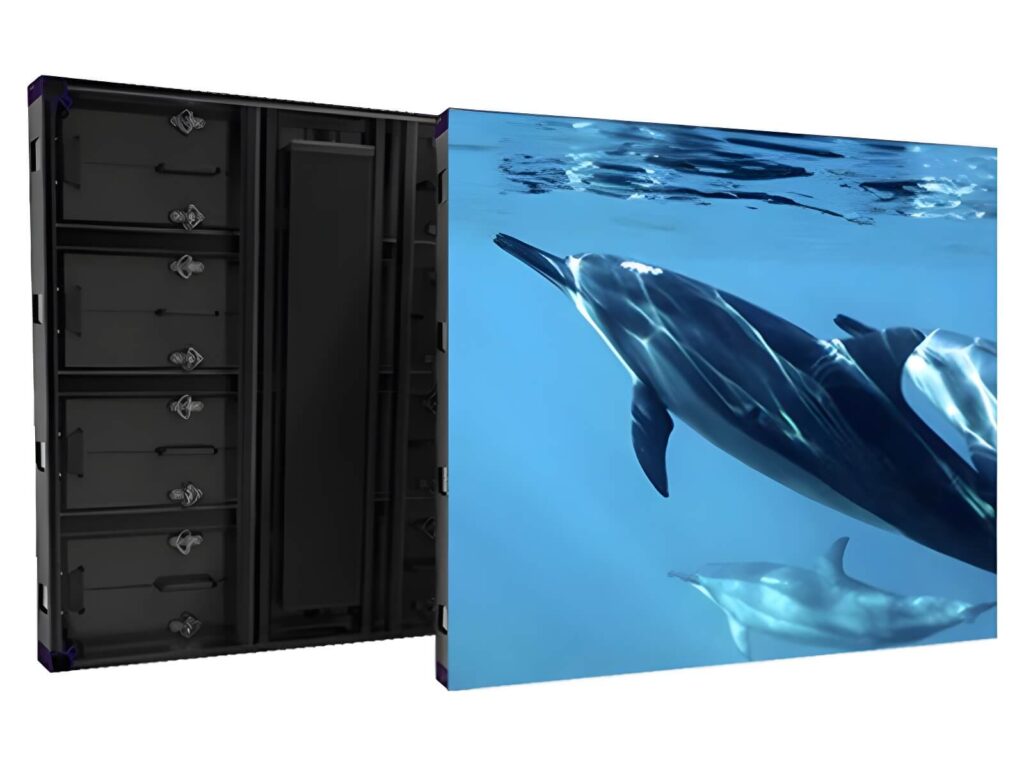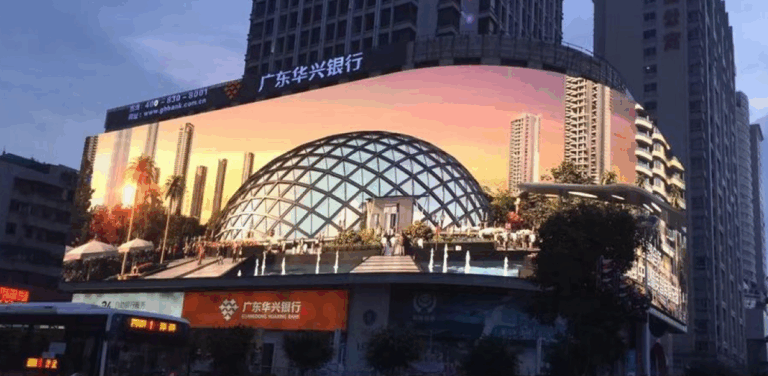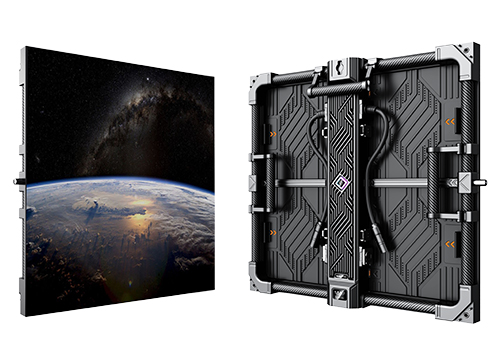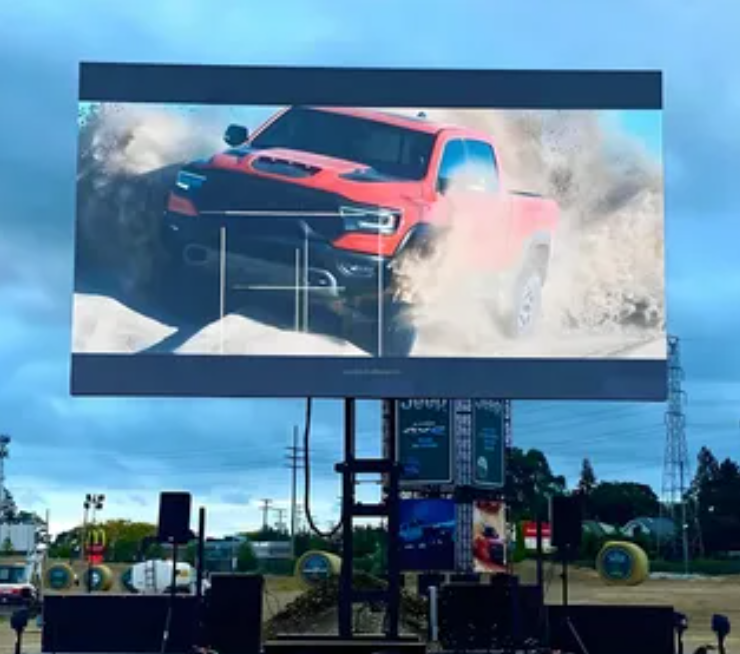Table of Contents
-
Principles of Waterproof System Design
-
Key Parameters and Comparisons
-
Design Considerations
-
Manufacturing Process
-
Quality Control
-
Application Differences by Project
-
Failure Mode Analysis (FMEA)
-
Supply Chain Analysis
-
Purchasing Recommendations
-
Conclusion
Outdoor LED displays are widely used in stadiums, commercial plazas, and highway billboards. The waterproofing design of the cabinet directly affects its stability, service life, and maintenance cost. This article explains the core engineering elements behind a reliable waterproof system—from structural and electrical considerations to process control and project-specific adaptations. Topics include gasket layout, chamfer design, compression force, thermal logic, component reliability, and more.

1. Principles of Waterproof System Design
a. Internal Structure & Signal Flow
A typical outdoor LED display cabinet includes:
-
Outer housing (aluminum alloy or steel)
-
Module mounting frame
-
Power and control system area
-
Gasket/sealing strip
-
Ventilation channels and drainage structures
The signal chain runs from the receiving card → control card → power supply → LED modules, forming a closed-loop system. Waterproofing must ensure that data connectors, power cables, and signal interfaces remain protected from moisture. Any water ingress may cause short circuits, display failure, or module damage.

b. Thermal Design Logic
Outdoor LED cabinets operate under intense sunlight and high temperatures. Waterproofing design must not restrict heat dissipation:
-
Use silicone gaskets with high thermal conductivity and strong aging resistance
-
Keep rear ventilation channels unobstructed
-
Position heat-sensitive components (driver ICs, power modules) close to heat-spreading surfaces
A balanced design ensures waterproofing and thermal performance complement each other rather than compete.
2. Key Parameters and Comparisons
| Parameter | Recommended Value / Standard | Engineering Notes |
|---|---|---|
| Gasket Material | Silicone, EPDM | UV-resistant, suitable for wide temp ranges; ≥90% recovery rate after compression |
| Gasket Compression | 20%–30% | Too low → water leakage; too high → structural stress and heat obstruction |
| Chamfer Angle | 30°–45° | Ensures smooth drainage and prevents water pooling |
| Protection Level | IP65–IP68 | Stadiums/roadside installs typically require IP66 or higher |
| Bolt Torque | 1.5–2.5 N·m per bolt | Ensures sealing without deforming cabinet |
| Power Protection | Waterproof housing + sealed connectors | Extends power supply lifespan |
| Thermal Design | Air channels + heat sinks + aluminum back panel | Maintains stable brightness in high temperatures |
3. Design Considerations
Structure & Tolerances
-
Cabinet mating surface flatness ≤ 0.2 mm
-
Module support gap ≤ 0.1 mm
-
Bolt hole tolerance ±0.15 mm
Thermal
-
Top side may combine chamfer drainage with ventilation channels
-
Module–baseplate contact area ≥ 80% for efficient heat transfer
Waterproofing
-
Door-frame joints must apply uniform compression with dual-layer sealing
-
Data and signal ports should use IP67 or higher waterproof connectors
Electrical
-
Power supplies should be IP67 or placed in dedicated waterproof boxes
-
Cables and connectors must be outdoor-grade and weather-resistant
4. Manufacturing Process
SMT Process
-
LED chips, driver ICs, and power-management ICs are mounted via SMT
-
Automated optical inspection (AOI) is applied to critical components
Assembly Workflow
-
Cabinet cleaning
-
Installation of rear heat plates
-
LED module assembly
-
Gasket application
-
Door installation
-
Bolt fastening
-
Waterproof grommet installation for cable interfaces
Aging Test
-
72-hour burn-in
-
55°C temperature / 85% humidity
-
Tests include brightness uniformity, leakage inspection, and connector thermal behavior
5. Quality Control
| Stage | Check Items |
|---|---|
| IQC | LEDs, power supplies, control cards, waterproof connectors, gasket materials |
| IPQC | Gasket compression force, chamfer cleanliness, bolt torque |
| FQC | Spray test for waterproofing, thermal performance test, full electrical function test |
| OQC | Random sampling before shipment: IP rating verification, aging test review, special tests per customer |
6. Application Differences by Project
Different Climate Environments
-
Tropical / High-Humidity Regions: Use EPDM gaskets, deeper chamfers, IP68 protection
-
Cold / Dry Regions: Account for thermal expansion; add adjustable compression bolts
Different Installation Scenarios
-
Stadiums: Large displays require cabinet gap control ≤ 0.3 mm, high wind-load resistance
-
Highways: Strong airflow and dust; gaskets must resist abrasion
-
Outdoor malls: A balance between appearance and waterproofing; hidden compression systems recommended
7. Failure Mode Analysis (FMEA)
| Failure Mode | Possible Cause | Prevention |
|---|---|---|
| Water ingress | Aged gasket, low compression | Gasket lifespan ≥ 5 years; torque standardization |
| Module short circuit | Unsealed connectors | Waterproof cable glands + IP67 connectors |
| Poor heat dissipation | Gasket too thick | Maintain 20%–30% compression range |
| Cabinet deformation | Over-tightened bolts, material fatigue | Torque control + periodic inspection |
8. Supply Chain Analysis
-
LED chips: Choose Nichia, Osram, or top domestic suppliers for low light decay and stable color temperature
-
Power supplies: Outdoor-rated, wide temp range –40°C to +65°C
-
Control systems: Prefer models with remote diagnostics and IP67 connectors
-
Gaskets & hardware: Silicone or EPDM; bolts in stainless steel 304/316
9. Purchasing Recommendations
-
Don’t chase low prices blindly—cabinet tolerance precision and waterproof rating matter more
-
Ensure gasket and chamfer design support long-term outdoor durability
-
Choose control systems with remote monitoring for faster fault diagnosis
-
Verify that thermal design prevents brightness drop or driver failure in high heat
10. Conclusion
Waterproofing an outdoor LED display involves far more than sealing strips and chamfers. It requires integrated thinking across thermal design, electrical engineering, manufacturing processes, and quality control. Proper compression control, chamfer geometry, bolt torque, and high-reliability components are essential for long-term stability. With a holistic engineering approach, LED displays can achieve strong waterproof performance across varied climates and applications—reducing failure rates and extending operational life.
References:





